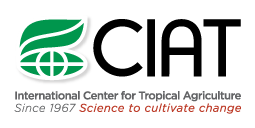by ciatreport2015 | Apr 21, 2016 | Innovation
Thanks to their ability to hover low over fields with sensors, drones provide accurate information on what is being grown and where, as well as the ability to rapidly evaluate the status of crops. They open the door to “site-specific agriculture”, a...
by ciatreport2015 | Apr 21, 2016 | Innovation
SOC calculates the organic carbon content of a particular soil, as well as the quantity of carbon that would be sequestered by soil conserving management practices. With the ability to adjust variables and see results in real-time, the app visualizes how sequestration...
by ciatreport2015 | Apr 21, 2016 | Innovation
Scientists extracted DNA and conducted DNA fingerprinting to identify what varieties farmers grow in Colombia and Vietnam, which will ultimately allow researchers to assess farmer variety adoption and ensure all known cassava varieties are conserved in CIAT genebank....
by ciatreport2015 | Apr 21, 2016 | Innovation
Ground-penetrating radars (GPRs) are used to see what’s below the ground. In 2014 when CIAT began using this technology to assess cassava root development, GPRs were the size of large vacuum cleaner. Today, they look more like a smart phone on a selfie stick and can...
by ciatreport2015 | Apr 21, 2016 | Innovation
Working with the Southern Agricultural Growth Corridor of Tanzania, scientists at CIAT are helping to drive large investment – both internal and external – in the region, by developing an online tool that provides investors with information about what risks their...
